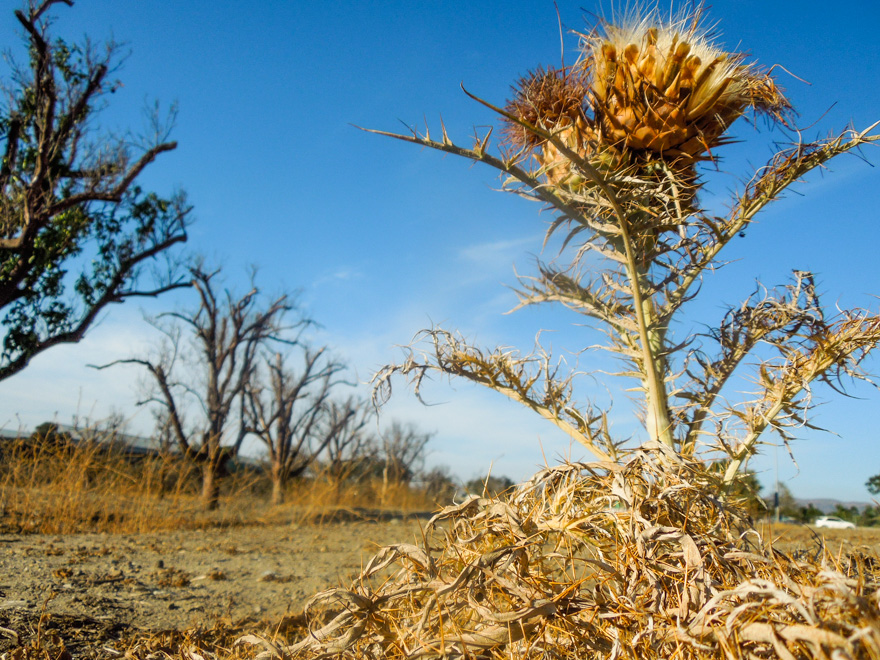New research from Stanford’s Remote Sensing Ecohydrology group published earlier this week in Nature improved the accuracy of earth systems models that examine the impact of droughts on ecosystems through considering plants’ breathing patterns.
Droughts are increasing around the world: More than 29 million acres of land are lost to drought and desertification annually, according to a 2022 UN report. Better understanding of how plants contribute to droughts is critical to planning adaptation response.
The paper, led by Meng Zhao, a postdoctoral researcher in Earth system science, used satellite data of total water storage and precipitation data to create a comprehensive map of water balance. The total water storage data is from Gravity Recovery and Climate Experiment (GRACE) and GRACE Follow-On (GRACE-FO), and precipitation data is from Global Precipitation Climatology Project (GPCP).
By leveraging this new, more accurate data, Zhao — along with colleagues from University of California, Irvine, and Ohio State University — were able to track the changes in water mass due to evapotranspiration of plants, allowing them to estimate signs of changes in water loss through plants in a given region.
Through evapotranspiration, plants take in water from the soil and emit the water vapor out to the atmosphere through the stomata, which act as tiny mouths on the plant leaves. Plants’ reactions to droughts can either exacerbate the water-stressed land or protect it, according to the paper. During times of drought, decreased soil moisture may limit water availability for plants to breathe out. However, stomata may be pressured to open more due to decreased air moisture, resulting in increases in water loss from plants.
The findings reveal that water loss through plants increases during almost half of drought months worldwide, despite the fact that there is less available water in soil. Consequently, the researchers concluded that the impact of the drought season’s high atmospheric demand for water generally contributes to a net increase in water loss through plants during drought.
Zhao and collaborators found that 44% of plants would lose more water through evapotranspiration during drought season — twice as much as the current estimate from the widely collaborated Earth systems model, the Coupled Model Intercomparison Project phase 6 (CMIP6), of 25%.
“This underestimation is particularly large in relatively drier climates and lower-biomass regions,” wrote Zhao and collaborators in the paper.
According to the paper, the error in existing Earth system models might be caused by researchers underestimating the contribution of moisture from deeper soil layers that can be absorbed by plants, despite lower water content near top soil layers due to drought. Another possible reason is the inaccurate understanding of the plant’s biological response to drought season.
“[The traditional] approach neglects the physiological processes associated with plant hydraulics,” the researchers wrote in the paper. For regions with limited biomass, the direct loss of soil water from evaporation from the ground can be significant but underestimated in existing models.
The implication of this research is that the impact of drought in ecosystems is more amplified by the loss of water through plants’ evapotranspiration than predicted in the past, according to an article on the paper in Stanford News. Rapid depletion of water availability in soil due to evapotranspiration may culminate in flash droughts in a matter of weeks; this can be better predicted due to this improved model.
The article highlighted how the regions that are currently suffering from drought may experience more extreme flash droughts than estimated from current models, as plants deplete water content in soil.
This research could also offer insights into how existing models can be improved, the Stanford News article said.
Researchers delineated in their conclusion the existing knowledge gaps in scientists’ understanding of soil moisture, structure, hydraulic conductivity and plant response to drought stresses. In the future, they said, earth systems models can be improved for better prediction of the rate of evapotranspiration in understudied regions where the effects of drought are exacerbated by environmental justice issues.
“I think our work can help improve the knowledge of these regions that are already water-stressed,” Zhao told Stanford News.
By leveraging data that is already well documented like satellite imaging, new models can be rapidly developed without having to start data collection from scratch.
